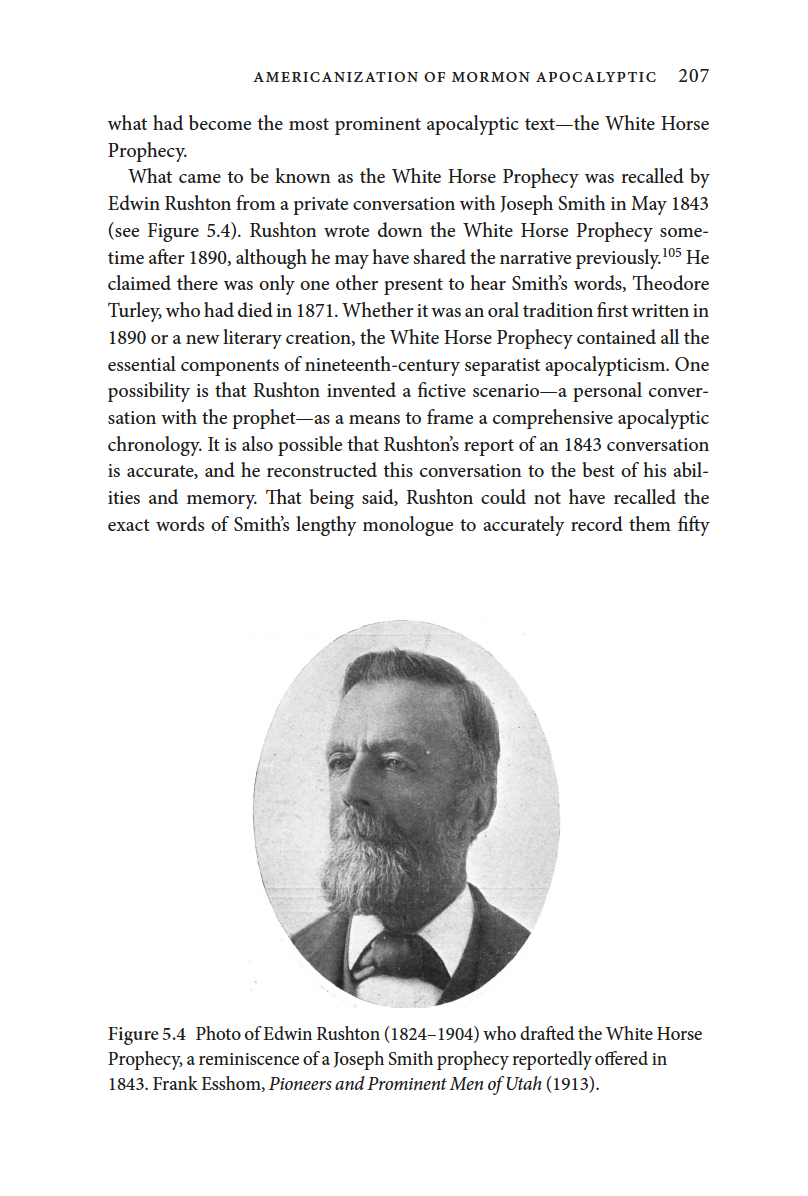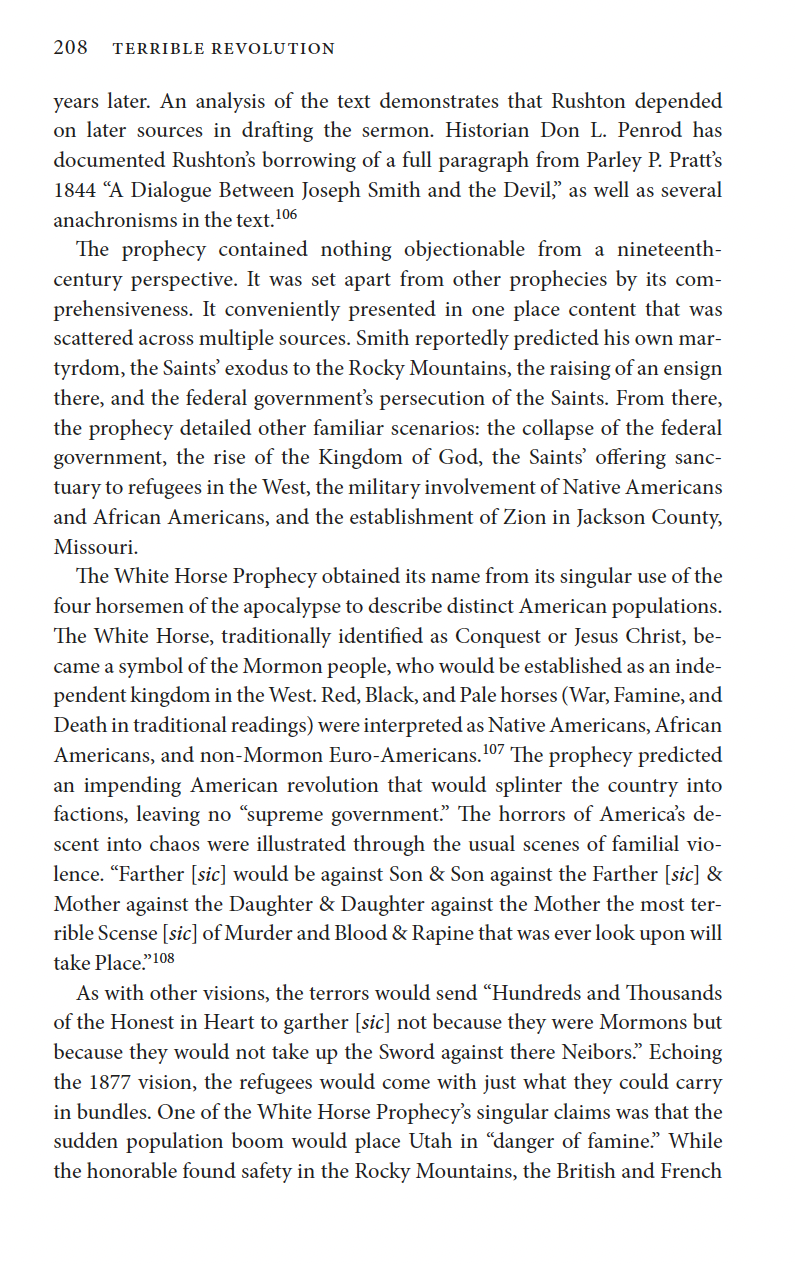Blythe argues that the White Horse Prophecy’s content is unobjectionable in contemporary apocalyptic expectations.
- Type
- Book
- Source
- Christopher James Blythe LDS
- Hearsay
- DirectSecondary
- Reference
Christopher James Blythe, Terrible Revolution: Latter-day Saints and the American Apocalypse (New York: Oxford University Press, 2020), 207-208
- Scribe/Publisher
- Oxford University Press
- Audience
- Reading Public
- Transcription
Whether it was an oral tradition first written in 1890 or a new literary creation, the White Horse Prophecy contained all the essential components of nineteenth- century separatist apocalypticism. One possibility is that Rushton invented a fictive scenario— a personal conversation with the prophet— as a means to frame a comprehensive apocalyptic chronology. It is also possible that Rushton’s report of an 1843 conversation is accurate, and he reconstructed this conversation to the best of his abilities and memory. That being said, Rushton could not have recalled the exact words of Smith’s lengthy monologue to accurately record them fifty years later. An analysis of the text demonstrates that Rushton depended on later sources in drafting the sermon. Historian Don L. Penrod has documented Rushton’s borrowing of a full paragraph from Parley P. Pratt’s 1844 “A Dialogue Between Joseph Smith and the Devil,” as well as several anachronisms in the text.
- Citations in Mormonr Qnas
The B. H. Roberts Foundation is not owned by, operated by, or affiliated with the Church of Jesus Christ of Latter-day Saints.


